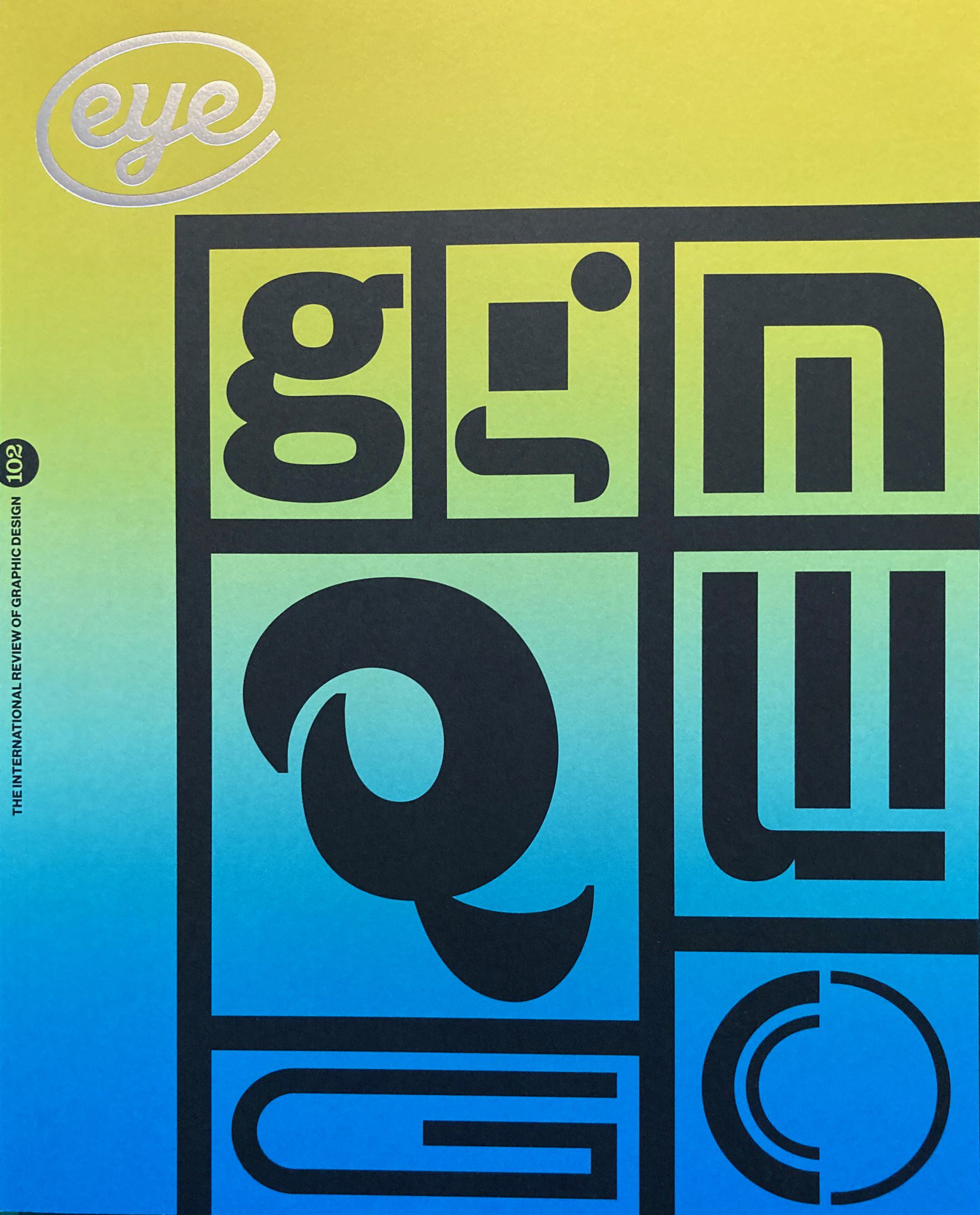Autumn 2021
Experiments in destabilisation
A CalArts book celebrates decades of purposeful graphic weirdness. Critique by Rick Poynor
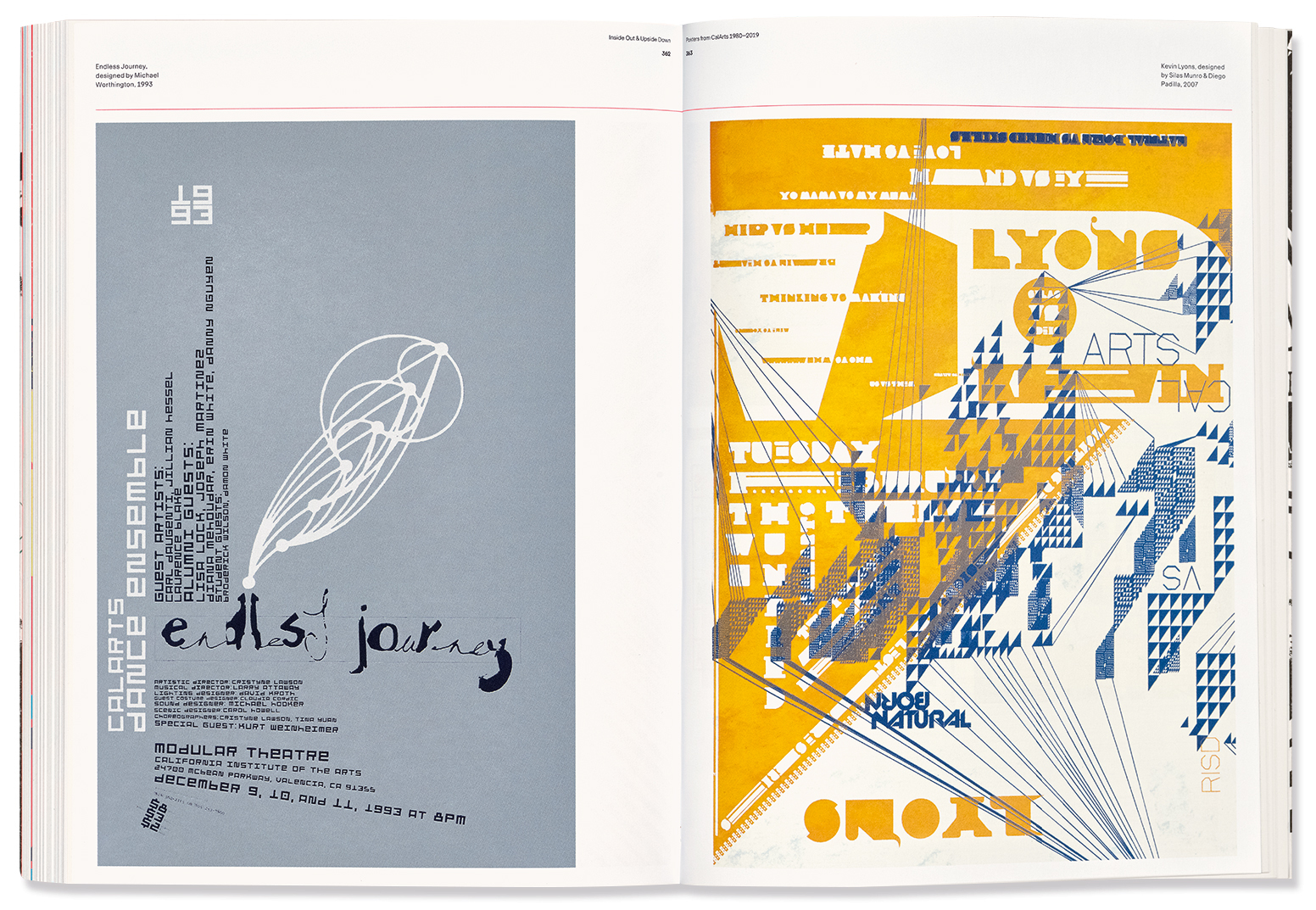
Michael Worthington was always an intriguing figure: a British graphic designer who went to California – California Institute of the Arts (CalArts) to be precise – and never came back. After completing his MFA in 1995, he joined the faculty of the school’s Graphic Design Program and he has been teaching there ever since. He has also run Counterspace, a design studio in Los Angeles specialising in books for cultural institutions.
Worthington first caught my eye in the mid 1990s with some exceptional posters created at CalArts. He was not alone. Other students and graduates from the famously experimental art school were producing equally original and innovative designs: Barry Deck, Somi Kim, Deborah Littlejohn, Geoff McFetridge, to name only a few. When posters and other projects in this style surfaced elsewhere in the US, graduates from CalArts were often behind them. In 1996, I published some of these era- defining pieces in Typography Now Two: Implosion.
One of 70 different cover designs for Inside Out & Upside Down. This one was designed by Tuan Phan.
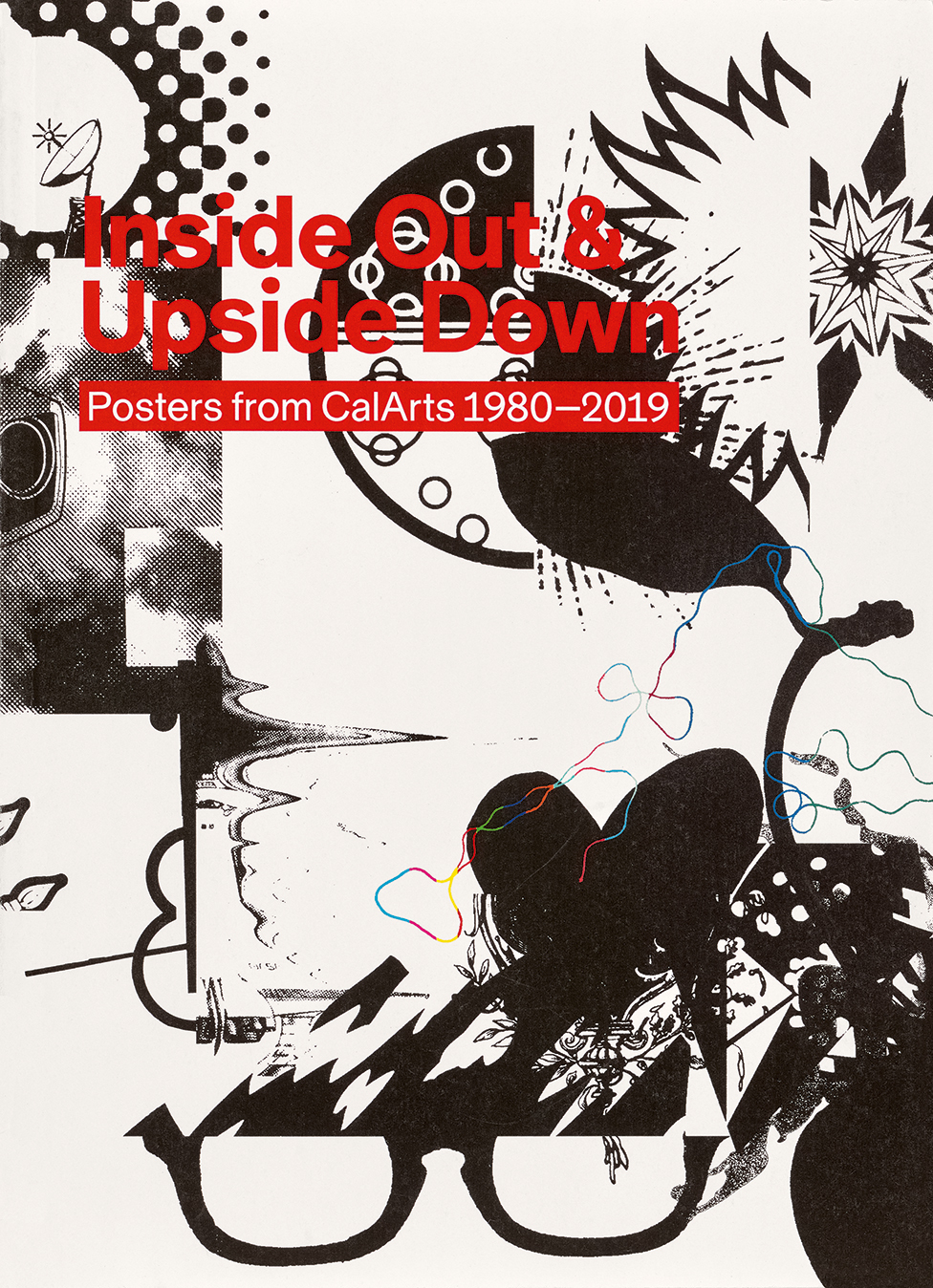
Last year, Worthington edited Inside Out & Upside Down: Posters from CalArts 1980-2019, the most complete overview of these posters to date. The book was intended to accompany an exhibition at the Redcat arts centre in Los Angeles, but the pandemic delayed the opening and the book – an edition of 700 copies with 70 different cover designs – appeared anyway. CalArts could not take it on, and it was not economically viable for a commercial publisher, so Worthington published it independently through his imprint MW Books.
Spread from Worthington’s introduction.
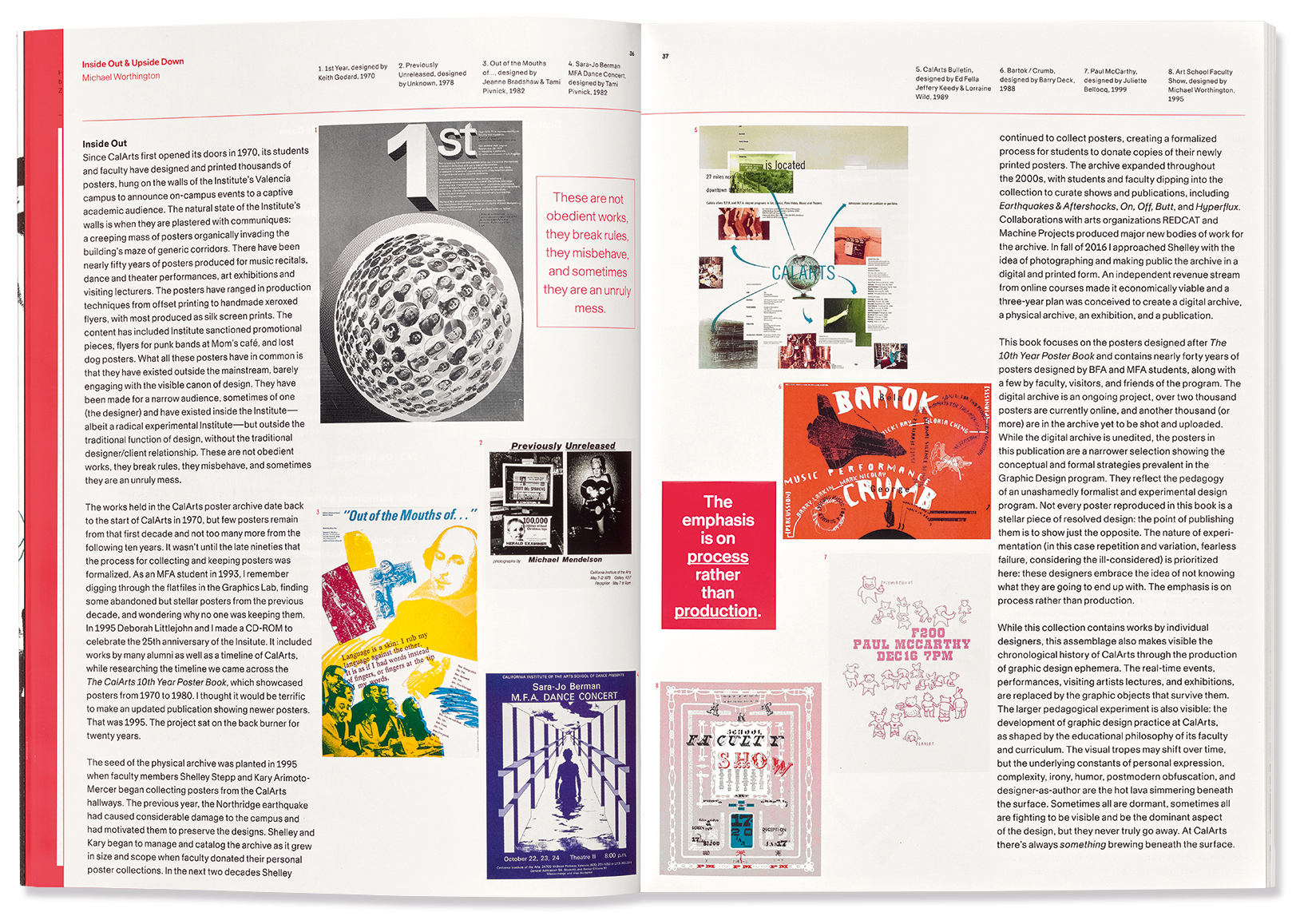
In the 1990s – arguably the heyday of the CalArts poster – these pieces were easily misunderstood. ‘They reflect the pedagogy of an unashamedly formalist and experimental design program,’ writes Worthington in his introduction. From a distance, it might seem as though CalArts was encouraging a totally unviable graphic weirdness, but the posters had an audience and a purpose: they announced events happening on CalArts’ campus. Both Worthington and Ed Fella, who also taught on the programme, describe the posters as a ‘closed system’ not intended for non-participants (although I never found that a barrier to appreciation). Within this enclave, BFA and MFA students could take chances, try things outside the framework of curricular assessment and, potentially, discover their own voices. The posters also gave powerful graphic expression to the ethos of CalArts as an institution.
Posters by Conor Mangat, 1993, and Deborah Littlejohn, 1993.
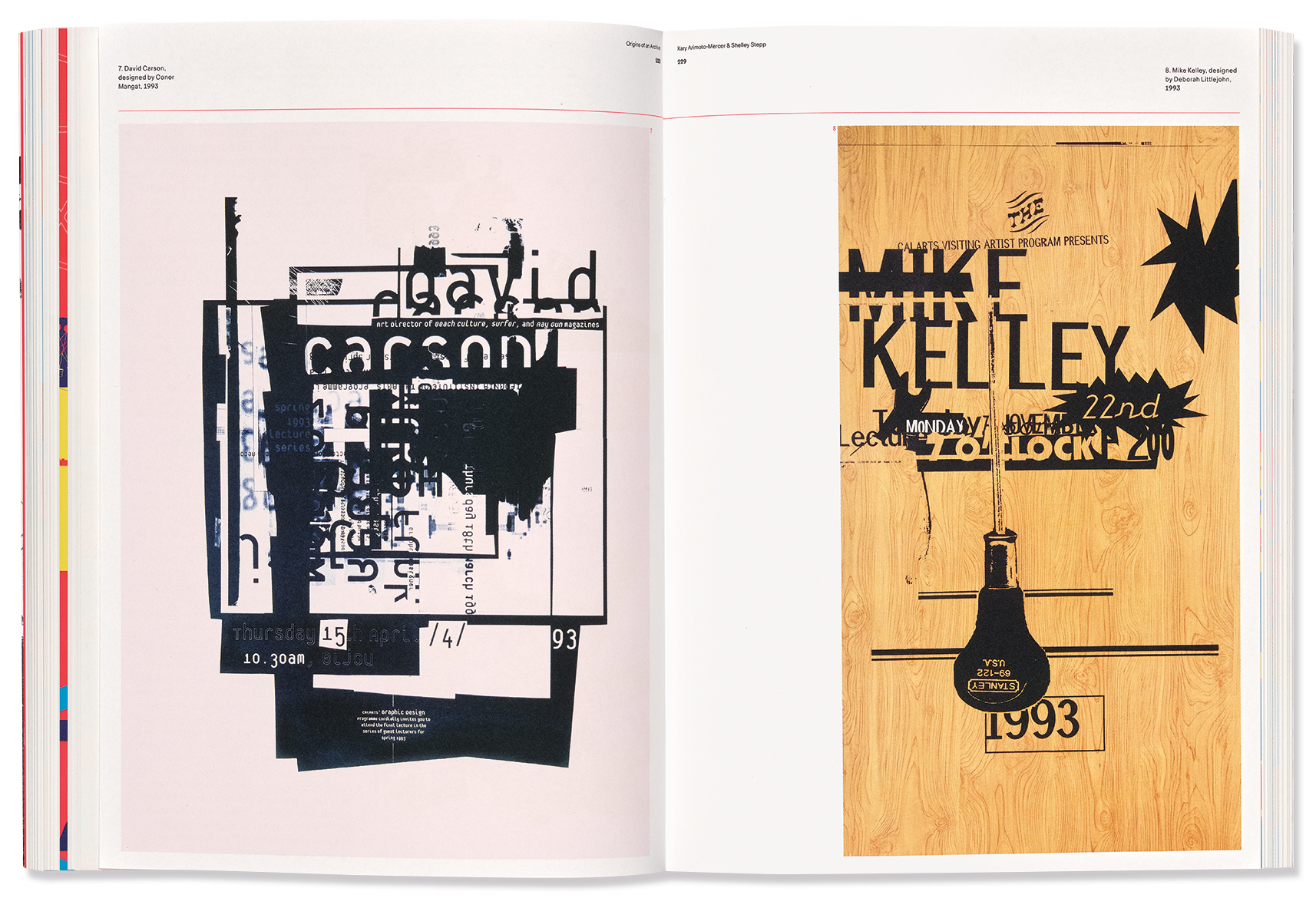
The students’ experiments often bore little relation to the rest of their work. Intrigued by the posters of a designer I had not noticed before, Joseph Monnens, I looked him up. Since completing his MFA in 1996, he has been a branding specialist and creative strategist in the Minneapolis-Saint Paul area – no sign of lasting damage from creating posters Worthington collectively terms ‘abnormal phenomena’ intended to be ‘not side effects, but deliberate destabilizing goals’.
Behind these experiments lay an embrace of postmodernism that set the programme apart. As CalArts School of Arts member of staff Lorraine Wild recalls, the staff expected the posters to reflect contemporary ideas that underpinned the teaching. There was no fiercer proponent of postmodern design than her colleague Jeffery Keedy. In one of several revealing dialogues, graphic designer and lecturer Jon Sueda recalls Keedy questioning students about their allegiances: ‘If you said you were a Modernist it was terrible, but if you said you were a postmodernist he would say “no you’re not!”’
Posters by Jessica Kao, 2014, and Brian Thompson, 2014.
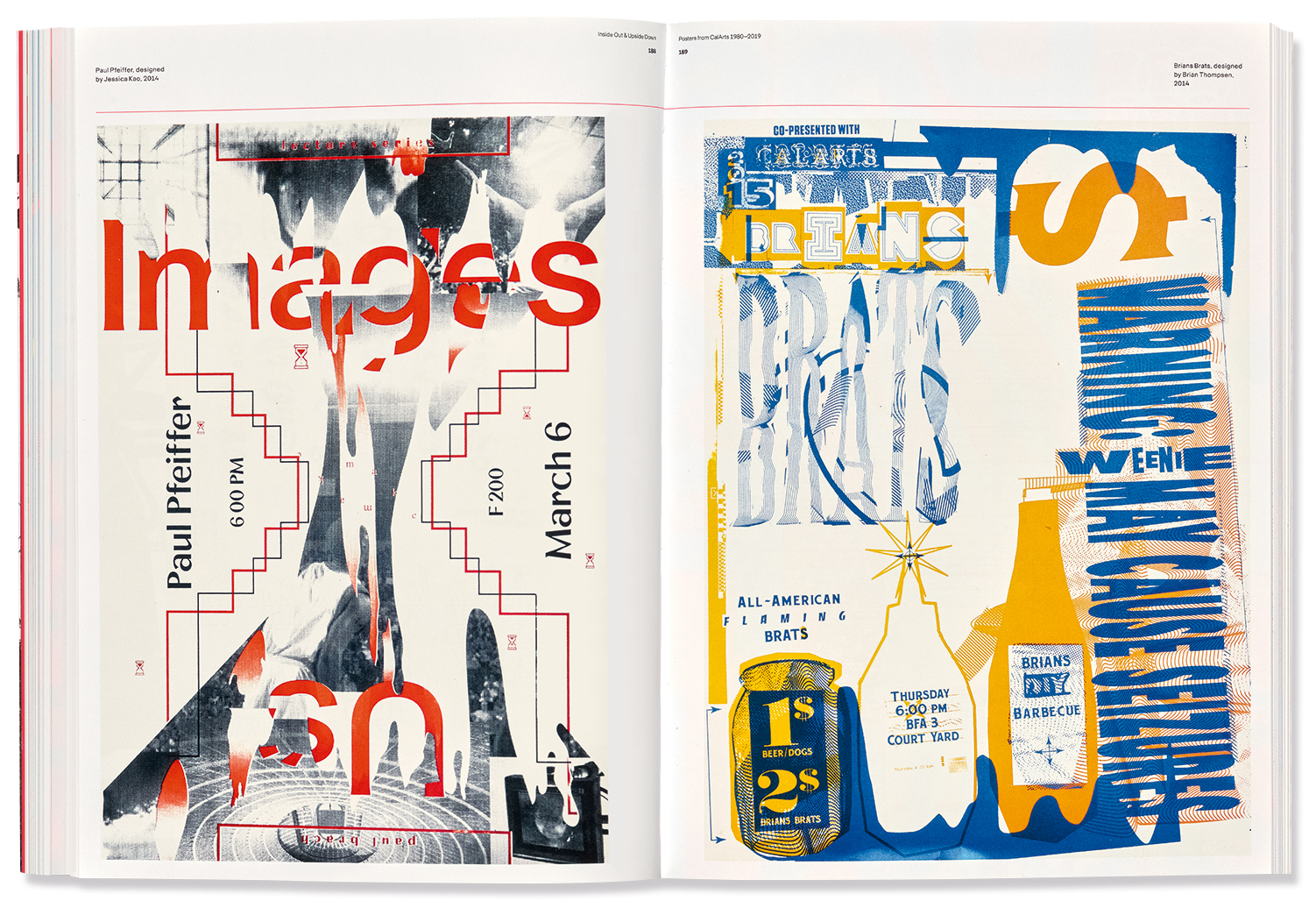
The debates needed now are even more challenging. The book’s most critical contribution, an essay by Sarah Gottesdiener, who gained her MFA in 2013, accuses the programme of failing to support her as a queer designer. She writes: ‘There was hardly any talk of design histories that were not Western, male, straight and colonising.’ But if ‘queering design’ means ‘throwing out the rules’ and being ‘beyond definition, unruly, a site of resistance’, as Gottesdiener says, then the posters should in theory have provided highly conducive platforms for any kind of perspective or disruption. In an online discussion of the exhibition with Worthington, two Black graduates, Silas Munro and Tasheka Arceneaux-Sutton, offer similarly telling comments on their CalArts experiences. Like so much of graphic design, CalArts’ provocative posters were perhaps whiter and more heteronormative than the programme realised until now.
Posters by Michael Worthington, 1993, and Silas Munro and Diego Padilla, 2007

Nevertheless, on a formal level, this remains some of the most stimulating graphic design to have emerged anywhere in the past 40 years. While the widespread pragmatism of educators when it comes to equipping students for real world marketplace conditions is understandable, one still must wonder why there are not more chances out there to push form-making further than drab conventions so often allow. Too much everyday graphic production remains predictable and ordinary, saying nothing noteworthy about the world (unless we feel the world is rather dull). Worthington’s engrossing labour of love provides a brilliant reminder of graphic design’s potential to destabilise and delight.
See thousands of CalArts posters here: posters.calarts.edu
Posters by Joseph Monnens, 1996, and Scott Zukowski, 2019.
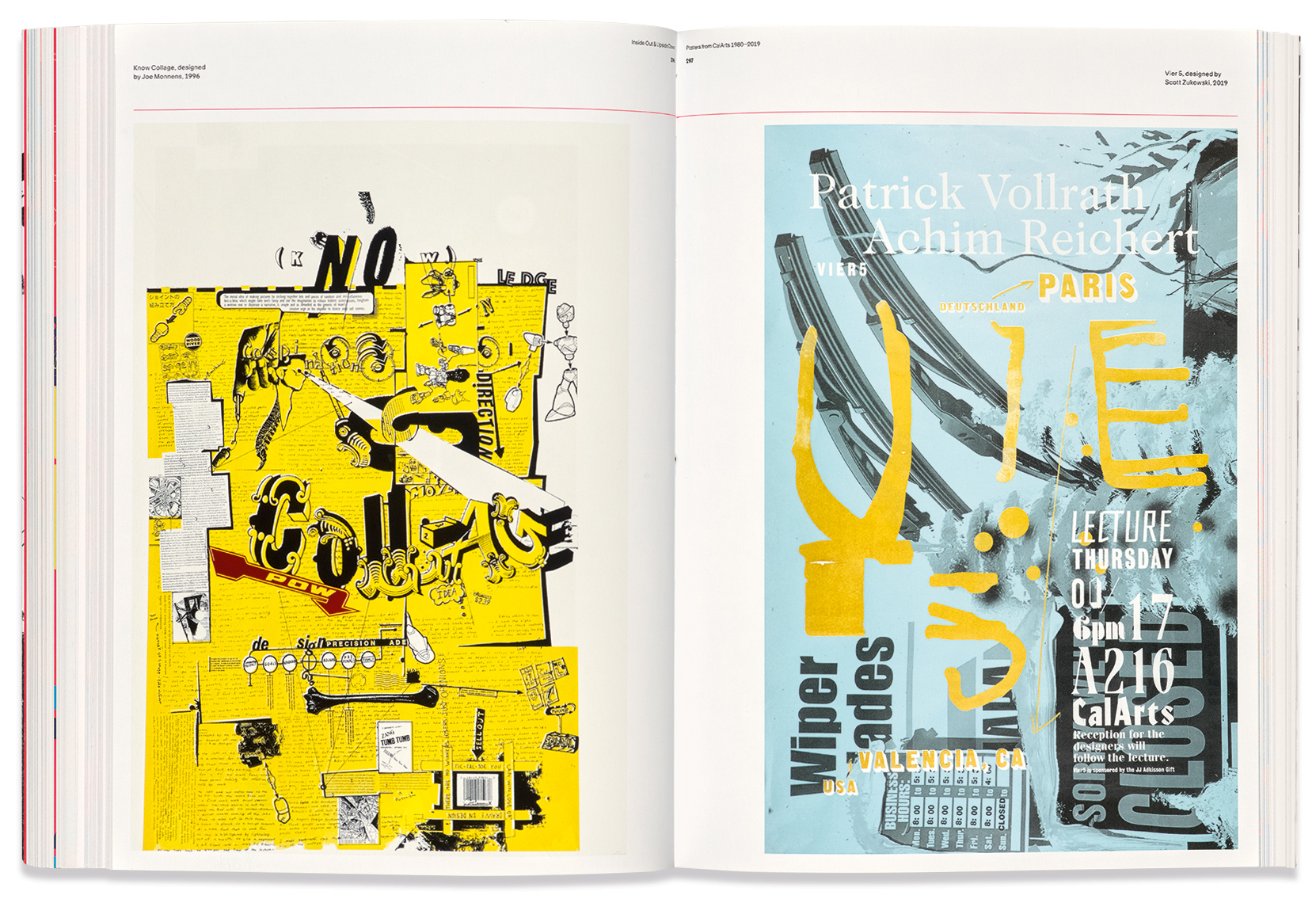
Rick Poynor, writer, Eye founder, professor of design and visual culture, University of Reading
First published in Eye no. 102 vol. 26, 2021
Eye is the world’s most beautiful and collectable graphic design journal, published for professional designers, students and anyone interested in critical, informed writing about graphic design and visual culture. It is available from all good design bookshops and online at the Eye shop, where you can buy subscriptions and single issues.

